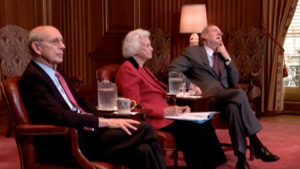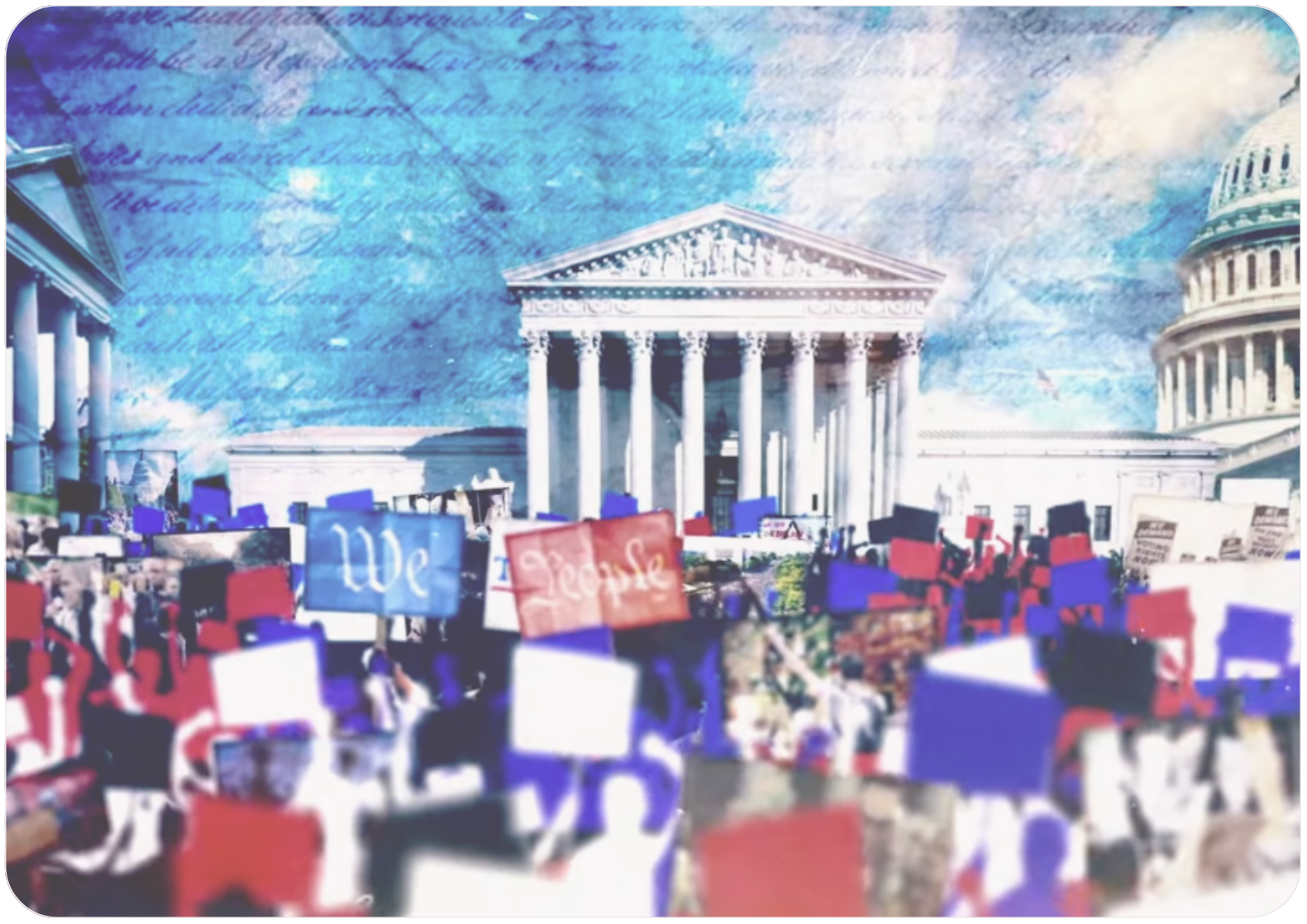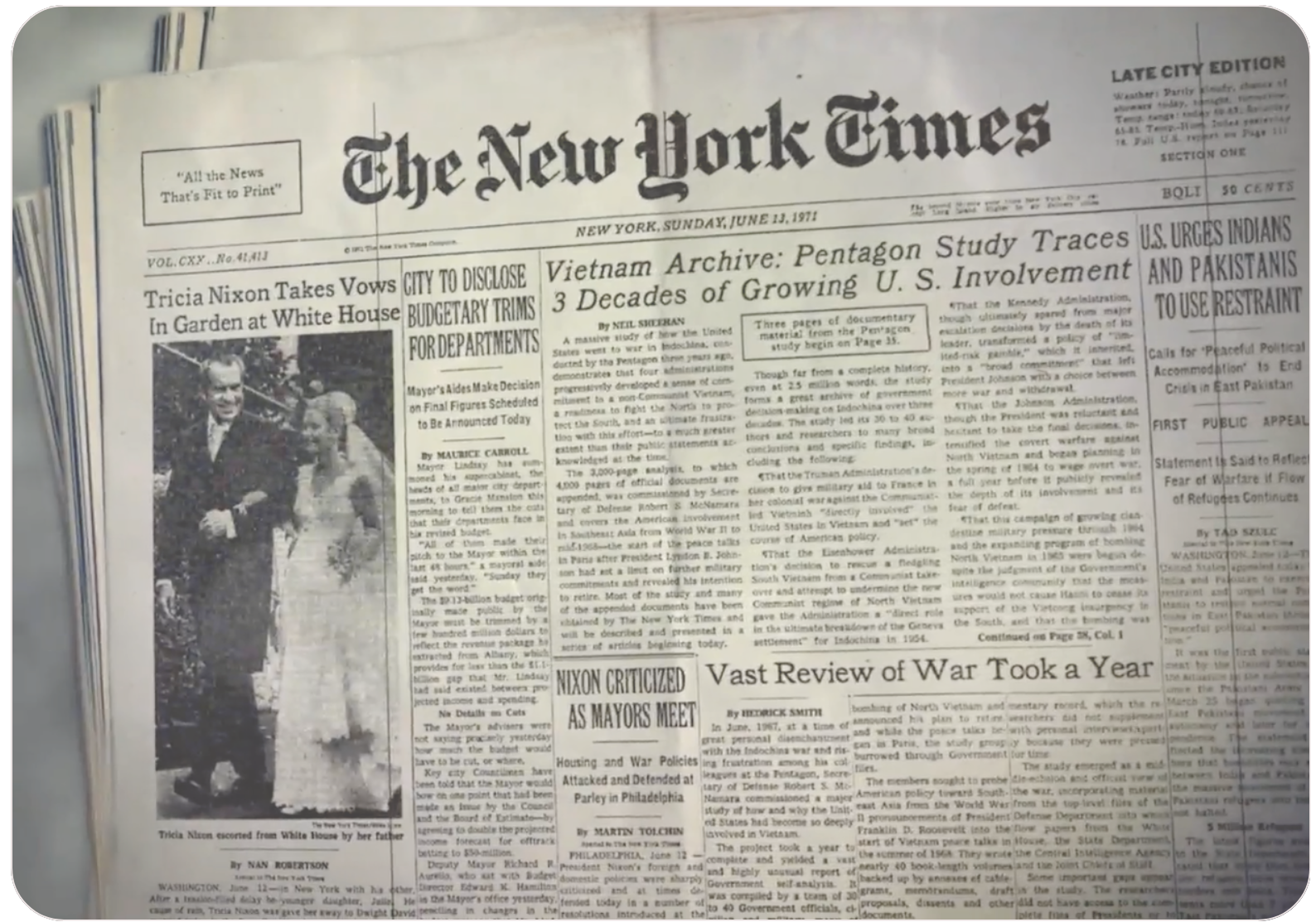This lesson will encourage students to investigate Supreme Court cases in conjunction with the Annenberg Classroom video “First Amendment: Student Freedom of Speech” to evaluate the decisions handed down by the Court in the effort to find the balance between a school’s need for order and a student’s right to expression. Students will explore five Supreme Court cases with the purpose of determining if the Court’s decisions helped or hindered defining “protected speech” for students in public school environments.
Freedom of Assembly: The Right to Protest
This lesson will focus on freedom of assembly, as found in the First Amendment. Students will consider the importance of the right to assemble and protest by analyzing cases where First Amendment rights were in question. Using the case National Socialist Party of America v. Village of Skokie, students will consider if the government is ever allowed to control the ability to express ideas in public because viewpoints are controversial, offensive, or painful. Students will use primary sources and Supreme Court cases to consider whether the courts made the correct decision in the National Socialist Party v. Skokie case. Students will be able to form an opinion on the essential question: Is the government ever justified to restrict the freedom to assemble?
Freedom of Assembly: National Socialist Party v. Skokie
This film explores the First Amendment right of the “people peaceably to assemble” through the lens of the U.S. Supreme Court case National Socialist Party of America v. Village of Skokie. The legal fight between neo-Nazis and Holocaust survivors over a planned march in a predominantly Jewish community led to a ruling that said the neo-Nazis could not be banned from marching peacefully because of the content of their message.
Freedom of Speech: Finding the Limits
In this lesson students gain insight into the many challenges involved in defining and protecting free speech. They also learn about principles that come from U.S. Supreme Court decisions, such as Tinker v. Des Moines Independent Community School District and Morse v. Frederick, and case law that are applied to define the limits for us today.
Freedom of the Press: New York Times v. United States
This documentary examines the First Amendment’s protection of a free press as well as the historic origins of this right and the ramifications of the landmark ruling in New York Times v. United States, the Pentagon Papers case, in which the U.S. Supreme Court ruled that prior restraint is unconstitutional.
A Conversation on the Constitution with Justices Stephen Breyer, Anthony Kennedy and Sandra Day O’Connor: Freedom of Speech
Justices Breyer, Kennedy and O’Connor and students discuss students’ free speech rights in the U.S. Supreme Court cases Tinker v. Des Moines Independent Community School District and Morse v. Frederick.

Chapter 6: The Right to Freedom of Speech
Free speech is our most fundamental—and our most contested—right. It is an essential freedom because it is how we protect all of our other rights and liberties. If we could not speak openly about the policies and actions of government, then we would have no effective way to participate in the democratic process.
First Amendment – Freedom of Speech
The First Amendment allows citizens to express and to be exposed to a wide range of opinions and views. It was intended to ensure a free exchange of ideas even if the ideas are unpopular. Freedom of speech encompasses not only the spoken and written word, but also all kinds of expression (including non-verbal communications, such as sit-ins, art, photographs, films and advertisements).
First Amendment
This timeline addresses freedom of speech and the press, freedom of assembly and the right to petition the government, and freedom of religion.
Chapter 18: Freedom of Speech in Public Schools
The controversy that led to the Tinker decision began at a late-November 1965 antiwar demonstration in Washington, D.C. Among the thousands of protestors at the nation’s capital were about fifty Iowans, including two high school students from Des Moines, John Tinker and Christopher Eckhardt.
Chapter 17: The Right to Remain Silent
Constitutional issues inevitably arise when the government’s efforts to prevent crime clash with the need to protect those accused of crime. The U.S. Supreme Court confronted such issues in Miranda v. Arizona (1966).
Chapter 10: The Flag-Salute Cases
In a constitutional democracy such as the United States, there inevitably is tension between majority rule and the rights of individuals in the minority. Citizens and their government continually confront two challenging questions.
Chapter 8: The Latitude and Limits of Free Speech
The First Amendment to the U.S. Constitution says, “Congress shall make no law. . . abridging the freedom of speech.” It expresses an absolute prohibition of legislation that would deny this freedom. Constitutional protection of this fundamental civil liberty, however, has not been absolute.


